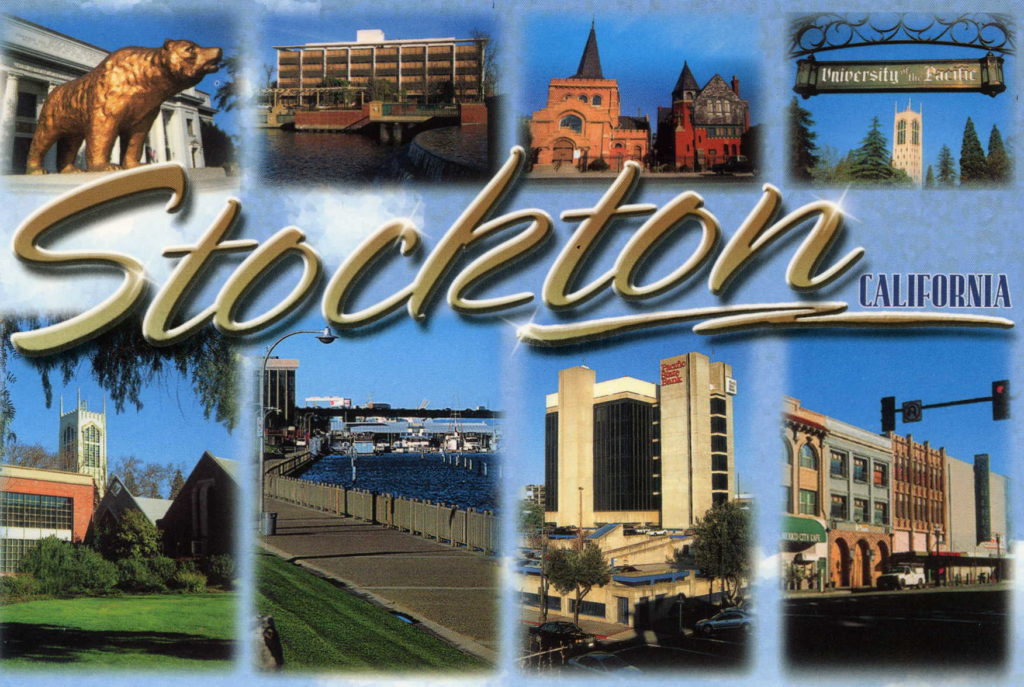Labor & Economy
Stockton Bankruptcy: Fat City’s Missed Opportunities

My hometown just declared bankruptcy. No, not the town I was born in, and not the place I have lived most of my adult life, but where I grew up. Stockton, with a population of about 300,000 is the largest city in America to file for Chapter 9 protection. Conventional wisdom says it was the unfunded pension liability or mismanagement or too much debt, and under state guidelines for bankrupt cities, somebody has to take the blame. But the choices that led to this debacle go back decades.
When I left Stockton in the mid-1960s for college, it was a divided city. The affluent and mostly white people lived on the north side. The “others” lived to the east and south. Others were people who worked with their hands, people who picked the fields, people who worked the seasonal canneries. These were mostly low-wage workers, sometimes no-wage workers who turned fresh produce into food for supermarket shelves across the country.
The city was founded to provide groceries and provisions. During the gold rush the town was a supply depot on the edge of the San Joaquin River, where it outfitted miners headed for the foothills. During World War II it distributed war materials to the Pacific Theater. Then it headquartered thousands of field workers – braceros, the contract workers imported from Mexico – who cut asparagus and picked tomatoes.
But the city’s birthplace became its shame – the largest skid row for a city its size in the nation – turning the gold rush-era buildings made of brick and timber, with some of the best ironwork west of New Orleans, into a warren of flophouses and bars. So the city decided to bulldoze the ground flat, and start over. One year I returned to find a new bus terminal that looked like a spaceport from the Flintstones sitting at an intersection surrounded by rubble-strewn empty lots. Another year, river’s end featured a “boatel” – a motel that also had a wharf for pleasure boats to tie up so folks could spend the night. A few years later both were gone, belly up, demolished.
Stockton lost its port focus when the Army Corp of Engineers dug a tax-financed, deep-water channel up the Sacramento River to the capital. The rice and grains that had filled the ocean-going ships headed to Asia now went to Sacramento instead, leaving Stockton’s port to find another export, which it never did. Then the Navy decided to decrease the size of its operations, the Army decentralized its major distribution center and the trains didn’t have as many reasons to stop there anymore.
Meanwhile the city let the developers leave downtown for the north side, building wherever and whatever, and everyone disinvested from the remainder. Some of the most fertile cropland in the nation was covered with big-box stores and residential cul-de-sacs. Then in the rush of privatization, Stockton, which is surrounded by water, sold its water system to a corporation, which promised major infrastructure investments but now holds the city hostage — threatening to provide no water.
Too late, the city sold bonds to restore what was left of the old gold rush town, fixing up a few remnants and hoping gentrification would take care of the rest. It didn’t. So Stockton filed for bankruptcy.
It could have built on its assets. It could have recognized it agribusiness base and built on it as other Central Valley towns did. It could have built affordable housing and preserved neighborhoods for the folks who work low paying jobs. It could have saved its gold rush heritage, revered its Victorians, and become another Old Town like Pasadena. It could have kept its water.
Instead it followed the reigning conventional wisdom of whatever era – urban redevelopment by bulldozer, tax rebates for businesses that didn’t need them, city planning run by developers, municipal bonds for projects that promised a future built on illusions. The city either destroyed its assets or realized what it had lost long after it was too late. So sadly, whatever blame will be passed around, Stockton stands as a caution for all of us: Cities cannot buy a new future by ignoring their assets and forgetting their history.
-

 California UncoveredApril 9, 2024
California UncoveredApril 9, 2024700,000 Undocumented Californians Recently Became Eligible for Medi-Cal. Many May Be Afraid to Sign Up.
-

 Feet to the FireApril 22, 2024
Feet to the FireApril 22, 2024Regional U.S. Banks Sharply Expand Lending to Oil and Gas Projects
-

 Class WarMarch 26, 2024
Class WarMarch 26, 2024‘They Don’t Want to Teach Black History’
-

 Latest NewsApril 10, 2024
Latest NewsApril 10, 2024The Transatlantic Battle to Stop Methane Gas Exports From South Texas
-

 Latest NewsApril 23, 2024
Latest NewsApril 23, 2024A Whole-Person Approach to Combating Homelessness
-

 Latest NewsMarch 27, 2024
Latest NewsMarch 27, 2024Street Artists Say Graffiti on Abandoned L.A. High-Rises Is Disruptive, Divisive Art
-

 State of InequalityApril 11, 2024
State of InequalityApril 11, 2024Dispelling the Stereotypes About California’s Low-Wage Workers
-

 Latest NewsApril 24, 2024
Latest NewsApril 24, 2024An Author Reflects on the Effort to Rebuild L.A. After the ‘Violent Spring’ of 1992




















